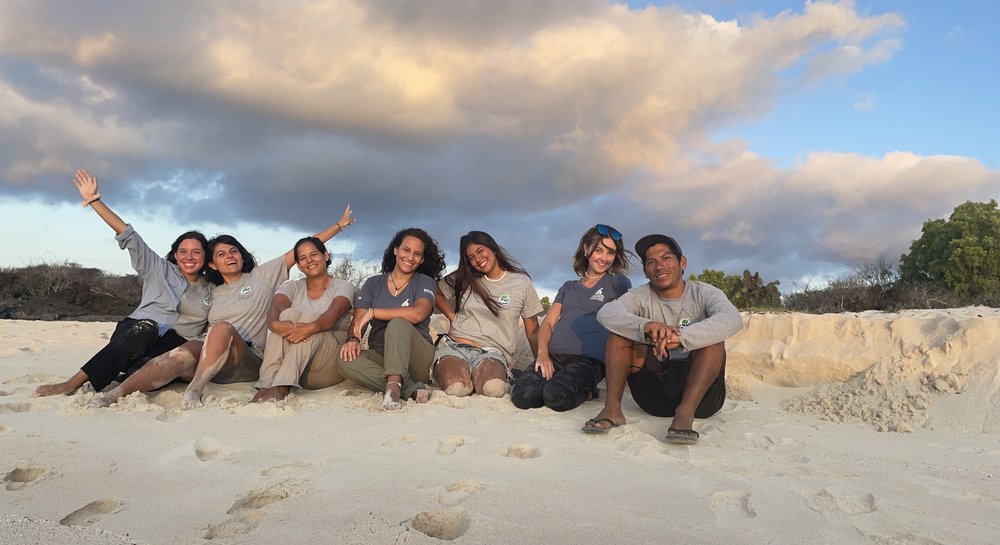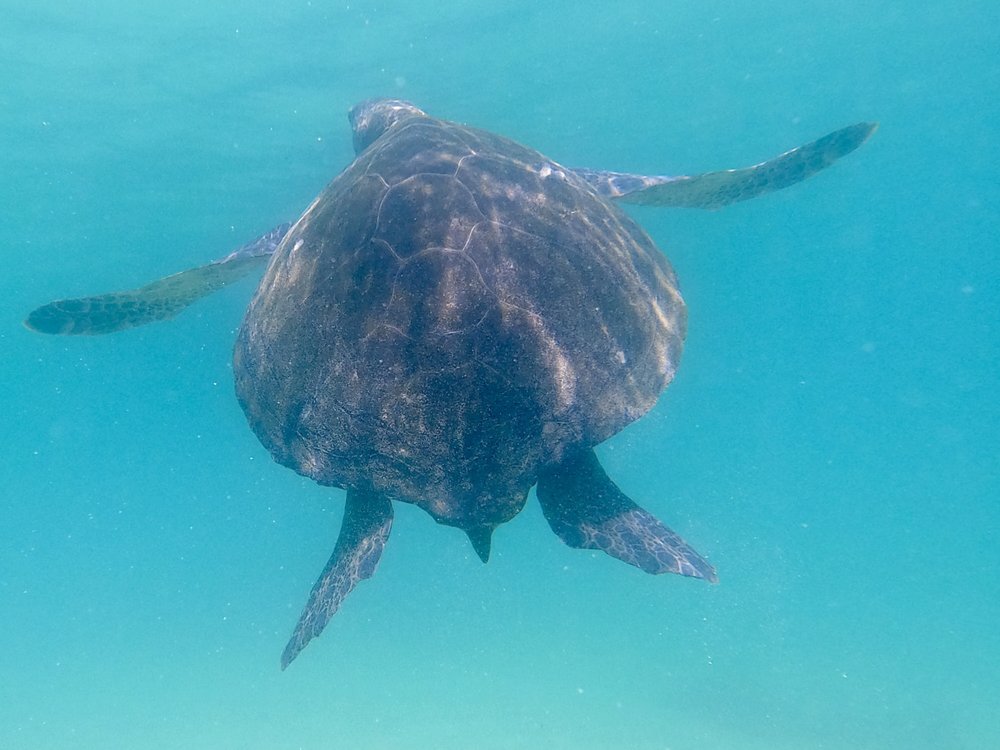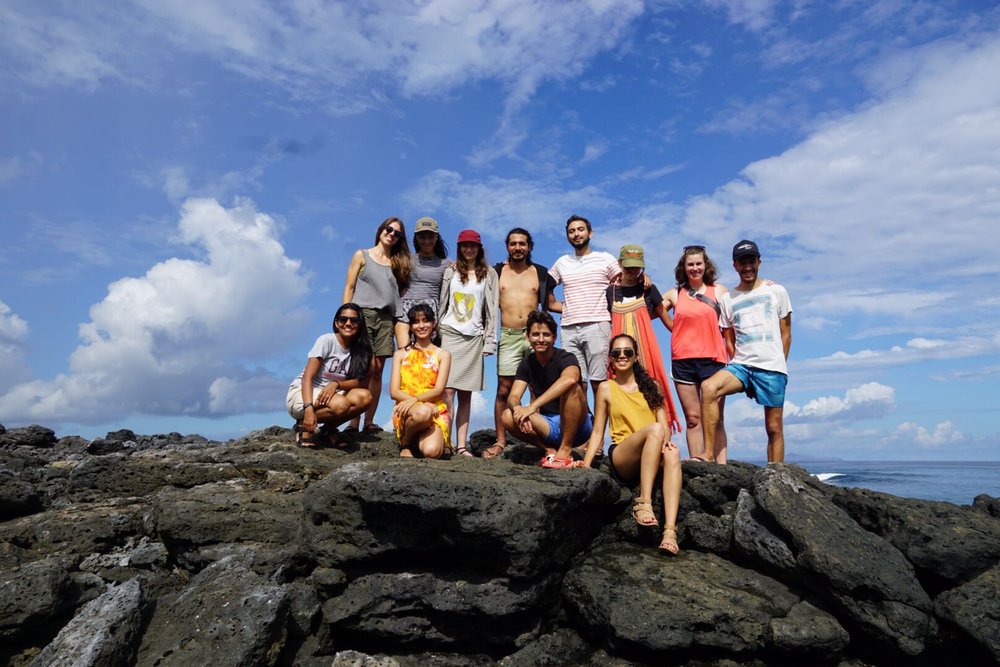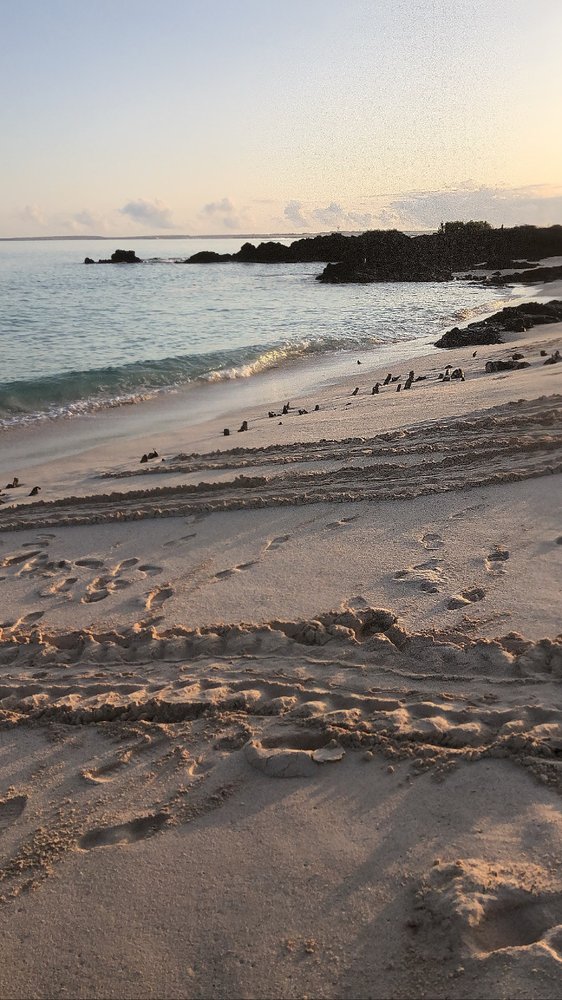Author: Lucy Phillips, CDF Volunteer
For the past six weeks I have been a volunteer at the Charles Darwin Research Station, working on the marine turtle conservation project with Macarena Parra and Diana Loyola.

Ever since I arrived at the Research Station in Puerto Ayora I have been surrounded by the most wonderful people. Everyone is kind, welcoming, and incredibly passionate about their work – speaking to people from different departments has made me realise just how diverse the conservation efforts are at the Research Station. Once you start talking to a scientist about ‘their’ species – from green turtles and hammerhead sharks to mangrove finches and giant tortoises, there’s no end to the facets of fascinating information (or my questions!). Of course, I am biased towards marine turtles (Chelonia mydas) – although I knew relatively little about the species when I arrived back in January, Macarena and Diana patiently explained all I needed to know to play an active role in the project, and more. For example, the shells of the Chelonia mydas range significantly in colour – turtles of the same species can have shells that are distinctly more amarillo (yellow), negra (black) or green from one another.

Going out into the field was possibly the best few weeks I’ve ever had. That’s not saying it’s easy – I spent three weeks camping in Bachas, one of the main nesting beaches for Chelonia mydas here in the Galapagos, monitoring the turtles at night as they arrived at the beach to nest. Working at night was challenging because of the irregular sleep schedule (every night required adjusting the work schedule due to the changing tides), the mosquitoes (everywhere), and difficult visibility during periods of heavy cloud cover, rain, or no moonlight. Despite these challenges, being able to witness such a crucial part of the life cycle of Chelonia mydas was an honour. The nesting process (which can sometimes be two to three hours) of every turtle was unique; being at such proximity meant being able to observe other individualities such as skin, scars, sounds, size, deformations, interactions, and other behaviours.
I soon realised that there are so many factors that affect nesting, which is why working directly with the animals is so important. I also learnt the importance having a clear project goal and timeframe also: keeping data organised and accurate was crucial, so that every night it was possible to collect all the required data with minimal impact to the animals (headlights are only used when completely necessary when recording data). I am truly excited to see the project findings, and to see how our work has directly contributed to the conservation of Chelonia mydas. See the webpage for more information about the project.

Being a volunteer was more than just going into the field though. Not only do I enjoy spending time with my colleagues, but I now know volunteers from other projects too. During my time here I have lived in the on-site volunteer accommodation which (to you potential volunteers out there) I couldn’t recommend more. Getting to know the other volunteers has been the icing on the cake during this trip – there’s nothing better than exploring the islands together on weekends, or even just grabbing a bite to eat in town in the evenings (another top tip, future volunteers: the empanadas outside the mercado municipal are seriously good!).Were it not for the friends I have made here, I think it would have been a slightly difficult experience – I arrived not knowing a single person, yet I’m leaving with more friends than I could have ever imagined.

As I come to the end of my time here at the Research Station, I feel incredibly lucky to have been able to learn first-hand about the innovative projects that are happening right now in the Galapagos. Driven by intelligence, passion, and determination, every individual here works tirelessly in their area of expertise, and I feel honoured to have had the opportunity to speak to such engaging individuals. For me, it is the combination of people and place that sets my experience at the Research Station apart from anything else I have done before: the fascination of the scientific research itself, combined with the warmth of the scientists that undertake it. I think it’s safe to say that I’m going to miss this place a lot.





